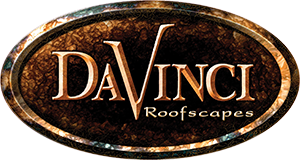Weathering the Storm: Using the Right Materials Can Prevent Damage
Homes better equipped for Mother Nature go beyond builder-grade materials.
By Jay Andreas
No one wants to see a huge storm with straight-line winds and large hail coming at them. It’s a lot easier to face it, though, when you’re confident your home can take what Mother Nature is dishing out. Using the right materials is key to preventing damage.
You’ve seen storm damage before: shingles with chunks missing and decking exposed; siding with holes that look like buckshot, just bigger; gutters, bent and pockmarked; and windows with screens ripped.
The main reason homes are destroyed by these storms is because of all the builder-grade materials being used today. The good news is it can be prevented, whether you are building a home, are replacing worn or aging components, or if you have a repair on your hands.
Prioritize Upgrades
Most home builders don’t have unlimited funding, so prioritizing upgrades is critical if you are building a home or have more than one repair or replacement ahead of you. An upgrade always costs more than builder-grade materials, but take a closer look at the money it saves you in maintenance or replacement, and you may decide it’s in your budget.
A good rule when deciding which areas to upgrade is to consider how easy it is to replace it down the road. Lighting fixtures are easy to replace, but the roofing, siding, windows, and flashing are not unless you win the lottery and don’t mind living in chaos. Also, consider if the upgrade will add to the home’s resale value, or not.
#1 Material to Upgrade
The number one material to upgrade, whether building or replacing it, is your roofing. Of course, you want ice and water shield. What you should be even more demanding of is proper flashing and top-grade shingles.
My recommendation is class-four rated shingles. They’re impact-resistant, so hail is going to have a hard time damaging them. There is a 50-year polymer (think plastic) roofing system that, in addition to not looking like plastic, is better than any metal roof, is able to withstand high winds, is zero maintenance, doesn’t fade, and is algae resistant.
Say No to Non-Insulated Vinyl Siding
The second area I recommend for upgrade is siding. Don’t use non-insulated vinyl siding. Instead, choose cellular composite PVC or fiber cement board. It’s almost impossible for cellular composite to take hail damage or storm damage.
Cellular composite is best. Added to its protection during a storm, you never have to paint it. It’s zero maintenance where fiber cement board requires painting every 10-15 years. Cost-wise, fiber cement is comparable to cedar, while cellular composite is more expensive. However, the long-term cost savings would be close to 30 percent.
Gutter guards are another way to protect from possible hail damage and lessen the chance they will take a beating from a storm.
Inspect All Flashing
Not only should homeowners make sure that all flashing is installed, it’s important that the flashings are installed properly, and any nail holes in the flashing are caulked. Often, when homes are getting leaks, it’s because it’s flashed incorrectly, or not at all.
Anywhere there are nail holes, make sure they’re caulked. Look carefully at the base of the roof, and on all flashings–wall and chimney. Also, make sure lead stacks are used on the roof instead of rubber boots as they will rot and crack and are the number one reason for roof leaks.
How do you make sure flashing is installed properly, and it’s placed everywhere it should be? Make sure you are there for all inspections and talk to your building inspector about it every time they come. They will perform inspections on all major trades—roofing, plumbing, electrical, framing. Those are very important.
Understanding the Building Envelope
A building envelope is the physical separator between the conditioned and unconditioned environment of a building, including the resistance to air, water, heat, light, and noise transfer. The building envelope keeps outside elements, such as moisture and humidity, from entering and causing major damage. This not only is a vital consideration for homes, but it’s especially important for warehouses and commercial properties.
This encapsulates everything, from the roofing materials and lead stacks to siding, flashing, and caulking, making sure everything is done correctly, so there are no leaks. No one wants to be in bed, feeling a strong draft, or seeing a spot on a ceiling after a storm.
2020 Building Trends
The single biggest trend this year is anything that is zero maintenance, from roofing products that will be in perfect condition long after you’ve moved, to siding that never has to be painted, to composite materials for decks and fencing that will never rot, and epoxy floors that come in any color a customer could want. Customers today look for worry-FREE solutions and know upgrades increase the value of their home.
Jay Andreas is the CEO of ASI Construction, an Illinois-based modeling and contracting company in the residential and commercial markets




